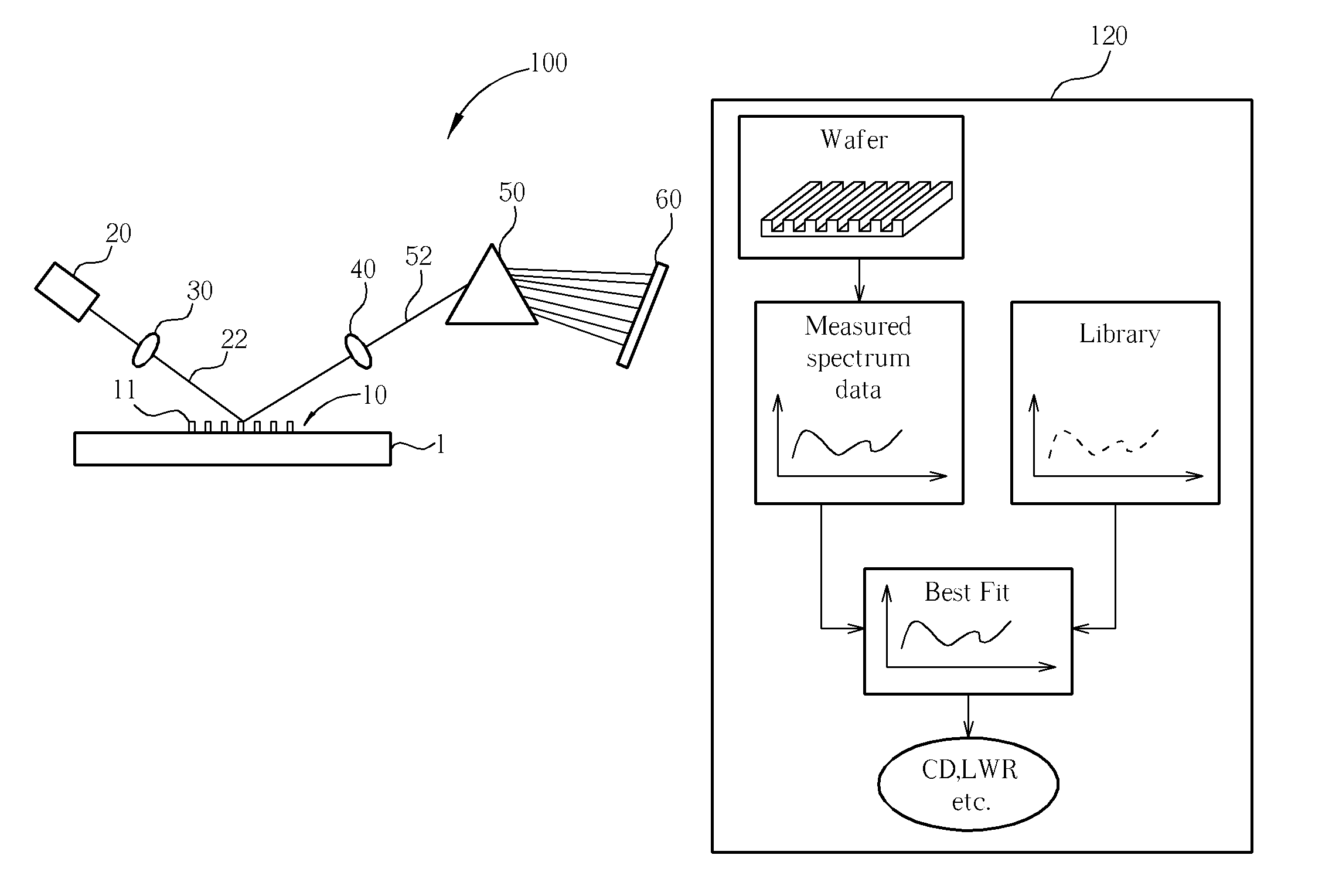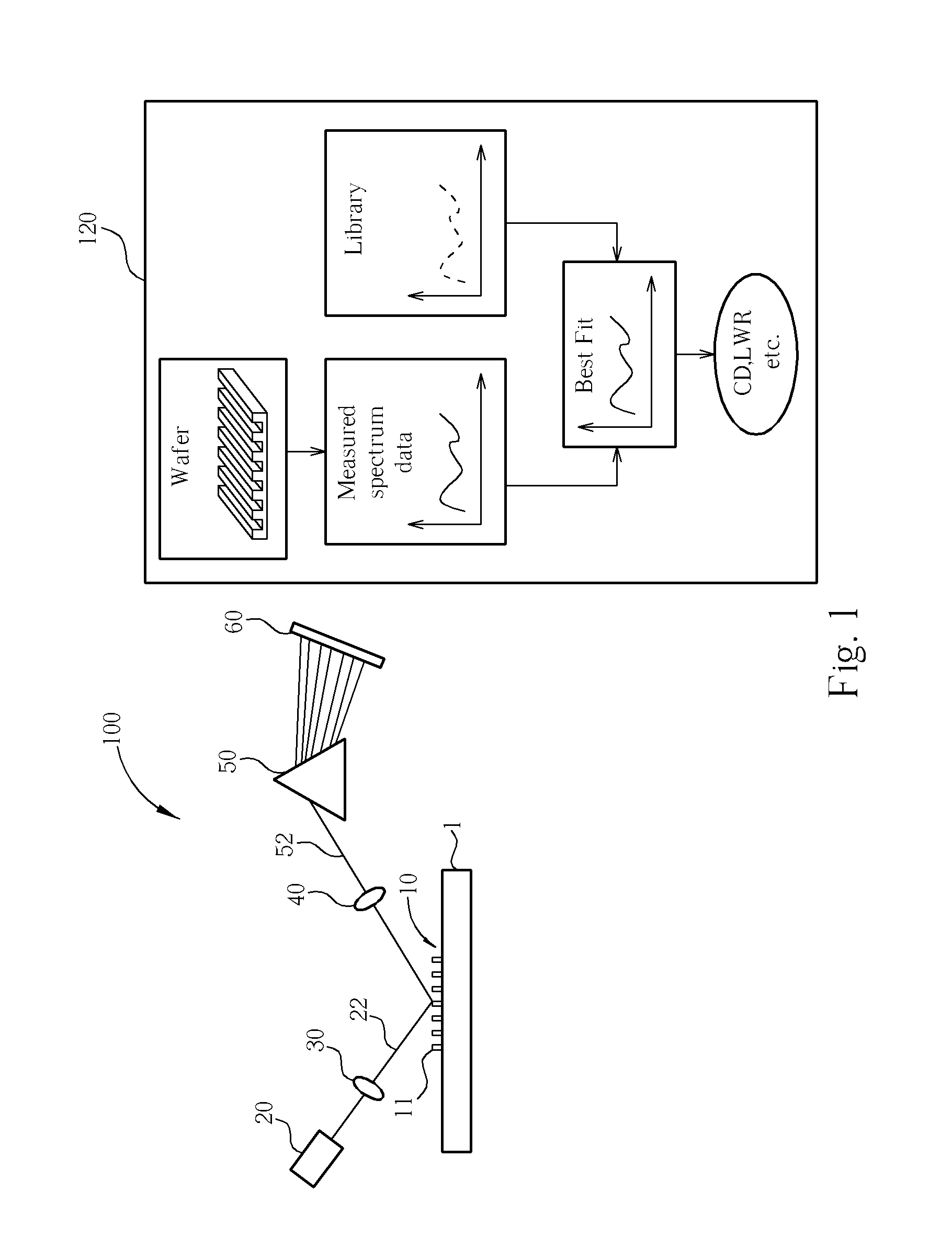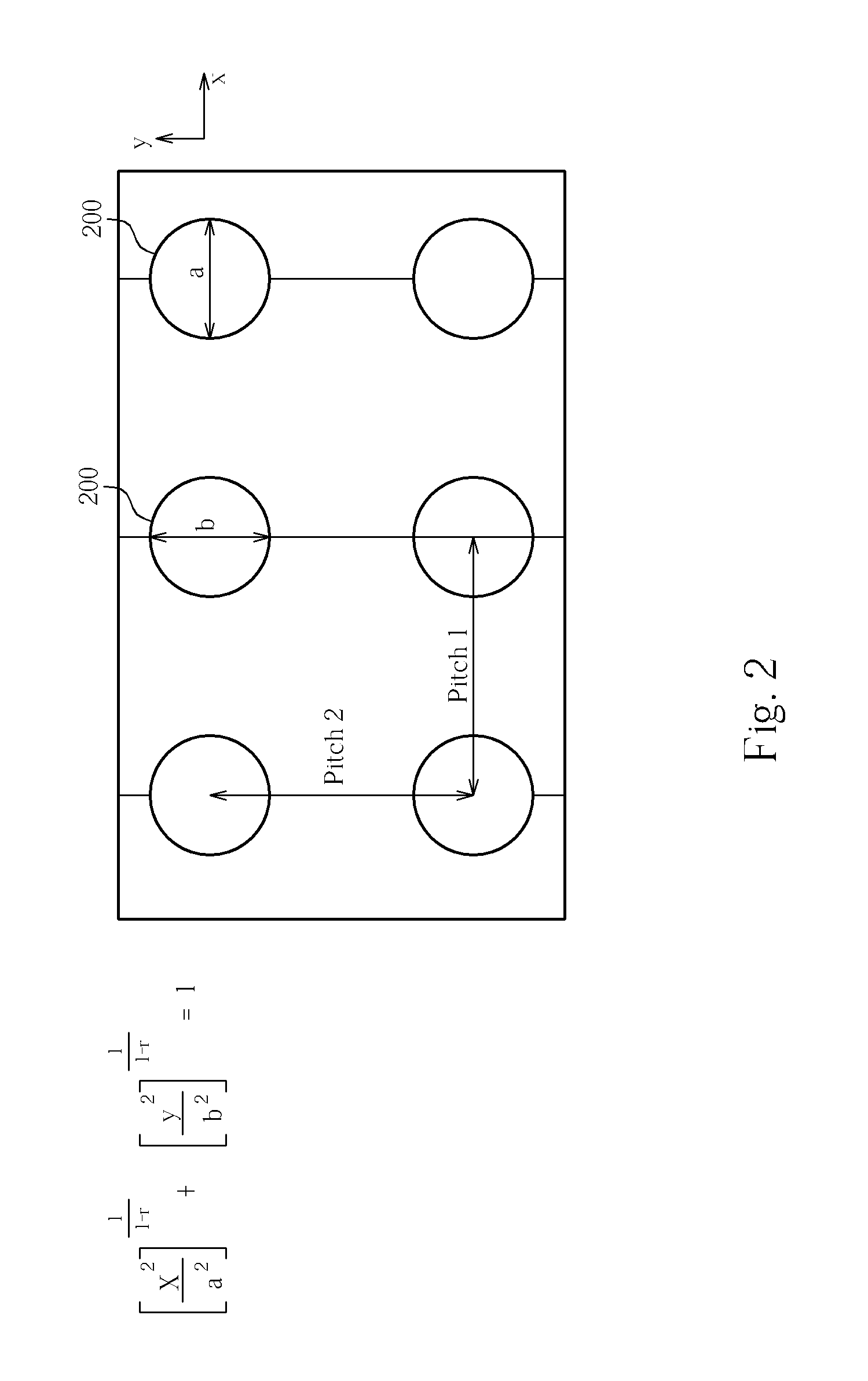Method for characterizing line width roughness (LWR) of printed features
a technology of printed features and roughness, which is applied in the field of non-destructive methods for measuring and characterizing line width roughness (lwr) of printed features, can solve the problems of undesirable electric charging of dielectric materials, loss of definition of lines, and damage to the 193-nm photoresist pattern
- Summary
- Abstract
- Description
- Claims
- Application Information
AI Technical Summary
Benefits of technology
Problems solved by technology
Method used
Image
Examples
Embodiment Construction
[0016]Smaller device and dimensions and tighter process control windows have created a need for CD metrology tools having higher levels of precision and accuracy. As critical dimensions (CD) for semiconductor devices shrink to a few tens of nanometers, the line edge roughness (LER) and line width roughness (LWR) becomes a critical issue.
[0017]As previously described, LER of a patterned line is an accumulation of the roughness originating from the resist, materials and etch. At the 90-nm and below, controlling the cross-sectional profile of critical layer structures such as gate patterning is key to maximizing yield and transistor performance.
[0018]The present invention pertains to a non-destructive, optical method for measuring and characterizing line width roughness (LWR) of a printed feature such as a critical layer of resist lines, which provides chipmakers with an effective in-line process control. The non-destructive, optical method of this invention is implemented using a spec...
PUM
 Login to View More
Login to View More Abstract
Description
Claims
Application Information
 Login to View More
Login to View More - R&D
- Intellectual Property
- Life Sciences
- Materials
- Tech Scout
- Unparalleled Data Quality
- Higher Quality Content
- 60% Fewer Hallucinations
Browse by: Latest US Patents, China's latest patents, Technical Efficacy Thesaurus, Application Domain, Technology Topic, Popular Technical Reports.
© 2025 PatSnap. All rights reserved.Legal|Privacy policy|Modern Slavery Act Transparency Statement|Sitemap|About US| Contact US: help@patsnap.com



